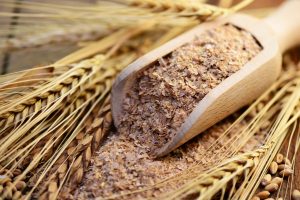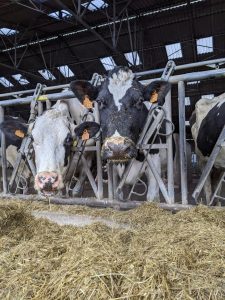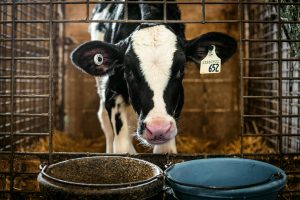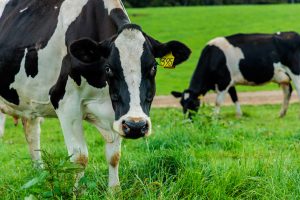Álvaro García
Minerals play an essential role in nutrition and overall health of livestock, supporting a variety of biological processes such as bone development, enzyme activity, immune function, and metabolic regulation. While animals often obtain many minerals from their diet, supplementing commercial mineral packs is necessary to prevent deficiencies, optimize performance, and promote overall animal well-being. Minerals are broadly classified into macro-minerals and micro-minerals also known as trace minerals. Macro-minerals, including calcium, phosphorus, magnesium, sodium, chlorine, sulfur, and potassium, are required in larger quantities to support essential physiological functions. In contrast, micro-minerals such as zinc, copper, manganese, iodine, selenium, iron, cobalt, and molybdenum are needed in smaller amounts but play critical roles in enzyme activation, immune function, and metabolic regulation. Because of these essential roles, ensuring the correct balance and bioavailability of minerals in livestock rations is indispensable for optimizing growth, reproduction, and disease resistance.
Bioavailability of mineral supplements
Bioavailability refers to the proportion of the mineral that is absorbed and utilized by the animal after ingestion. The availability of the mineral is influenced by multiple factors, including chemical form, the presence of other dietary components, and the animal’s specific nutritional needs.
- Absorption rate: Some forms of minerals are absorbed more efficiently than others. For example, chelated minerals are more bioavailable than inorganic salts.
- Interactions with other nutrients: Certain minerals can interfere with the absorption of others. For example, excessive calcium can reduce the absorption of magnesium, and high levels of phosphorus can inhibit the absorption of zinc.
- Digestive efficiency: The age, health status, and digestive system of the animal can influence mineral absorption. For instance, younger animals or animals with digestive issues may absorb minerals less efficiently.
Sulfates are among the most widely used inorganic mineral supplements, primarily due to their affordability, availability, and ease of incorporation into rations. They offer moderate bioavailability, making them a practical choice for large-scale operations. However, their absorption can be compromised by dietary antagonists. Elevated levels of calcium or phosphorus in the diet, for instance, can inhibit the uptake of sulfate-bound minerals, reducing their overall effectiveness.
Oxides, such as zinc oxide and copper oxide, are another usual form of mineral supplement. Their primary appeal lies in their low cost and widespread availability. However, oxides generally have lower bioavailability compared to sulfates and chelates, as the animal’s digestive system is less efficient at absorbing minerals from oxide forms. For instance, zinc oxide is absorbed less effectively than zinc sulfate, making it a less efficient option for meeting animal needs. While oxides can be useful in situations where high supplementation levels are required or where cost constraints are a primary concern, they are often less effective in improving performance.
Chelates represent the most bioavailable form of mineral supplements, offering significant advantages in terms of absorption and utilization. In chelated minerals, elements such as zinc, copper, and manganese are bound to organic molecules like amino acids, creating a stable complex that is less likely to interact with antagonistic compounds in the digestive tract. This binding allows chelated minerals to pass through the rumen and be absorbed directly in the small intestine, enhancing their bioavailability. Products like zinc methionine and copper glycine are examples of highly bioavailable chelated minerals commonly used. The increased absorption efficiency of chelates makes them particularly valuable for high-performance animals, such as lactating dairy cows or rapidly growing livestock, where nutrient demands are elevated.
Newer mineral supplementation options
Organically bound minerals have recently gained popularity as an intermediate solution between inorganic salts and fully chelated minerals. These minerals are bound to organic compounds, though not necessarily to amino acids or proteins as in true chelates. Instead, they may be attached to polysaccharides or other organic molecules that facilitate better absorption in the digestive tract. While organically bound minerals generally offer higher bioavailability than inorganic salts like sulfates and oxides, they typically do not match the absorption efficiency of full chelation.
Nano-minerals represent an innovative development in mineral supplementation. In this approach, minerals are reduced to exceedingly small particles, significantly increasing their surface area, and enabling easier passage across cellular membranes. This small particle size is believed to improve bioavailability, allowing for more efficient absorption. Research into their long-term effectiveness, safety, and environmental impact is still ongoing. Concerns about bioaccumulation, potential toxicity, and ecological effects highlight the need for further investigation. While nano-minerals show considerable promise in enhancing bioavailability, their long-term safety and environmental impacts remain under study (El-Hack et al. 2021).
Hydroxy-chloride minerals are another type of trace mineral supplement used in cattle nutrition. These minerals, including zinc, copper, and manganese hydroxy-chloride, are characterized by their unique crystalline structure, where metal ions are bonded to hydroxyl and chloride groups. This structure makes hydroxy-chloride minerals more stable than traditional inorganic sources such as sulfates and oxides. Unlike sulfates, which can be highly reactive and promote undesirable chemical interactions, hydroxy-chloride minerals exhibit low ruminal solubility, reducing the risk of antagonistic interactions with other dietary components (e.g., vitamins and minerals). Additionally, because hydroxy-chloride minerals do not promote the generation of free radicals or accelerate the degradation of sensitive nutrients like vitamins, they help maintain feed quality.
Fermentation products and probiotics have also emerged as valuable tools in livestock nutrition, particularly for enhancing mineral absorption by improving gut health. These supplements work by promoting a healthier digestive environment, supporting more efficient nutrient uptake, including minerals. Probiotics introduce beneficial microorganisms into the gut, while fermentation products—such as yeast cultures and their metabolites—promote the growth and activity of the animal’s gut microbiota. Ruminants, for example, benefit significantly from such supplements, as a stable rumen environment is critical for maximizing nutrient uptake and overall health. The effectiveness of fermentation products and probiotics can vary widely depending on the specific strains used, and the formulation of the supplement. Additionally, factors such as diet composition, environmental stressors, and individual animal health can influence how well these supplements perform.
Evaluating the mineral content in a commercial tag
The commercial dairy mineral supplement in the image below is formulated to support lactating dairy cattle, providing a balanced calcium range (14.6%–16.6%) and phosphorus (7.3%) that achieve an optimal Ca: P ratio (~2:1), essential for bone health, milk production, and reproductive performance. The inclusion of monocalcium phosphate, dicalcium phosphate, and calcium carbonate ensures adequate mineral delivery, while sodium bicarbonate aids in rumen buffering. The high salt content (18.6%–20.6%) serves as an intake limiter in free-choice systems, controlling voluntary intake to prevent overconsumption. It is important to note that the nutrient concentrations listed on this tag are significantly higher than the cow’s daily requirements because the supplement is designed for limited intake—where cows will consume only a small portion of the product each day. This concentrated formulation ensures that even with restricted intake, cows still meet their essential mineral and vitamin needs.
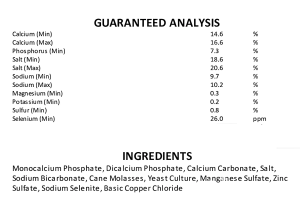
Magnesium (0.3%) is present at moderate levels, though it may be insufficient during periods of grass tetany risk, and potassium (0.2%) is notably low for lactating cows, especially during heat stress when higher levels are critical for maintaining milk production and electrolyte balance. This supplement also provides essential trace minerals, including selenium (26 ppm), zinc, copper, and manganese. While these levels appear high, they are formulated to account for limited daily consumption. However, the reliance on sulfate forms for zinc and manganese may reduce bioavailability compared to hydrochloride or chelated forms. The use of basic copper chloride is a positive aspect, improving stability and absorption.
When evaluating mineral supplements for livestock, it is essential to consider the bioavailability, mineral compound, and newer options like organically bound minerals. The choice of mineral supplement should also consider the specific nutritional needs of the animal, as mineral requirements vary depending on factors such as age, production stage, and health status. Ultimately, selecting the right mineral supplementation strategy will help optimize animal performance, promote overall health, and improve productivity. Since research into mineral supplementation continues, newer and more advanced future options may further improve efficiency and cost-effectiveness in meeting livestock nutritional needs.
© 2025 Dellait Knowledge Center. All Rights Reserved.



